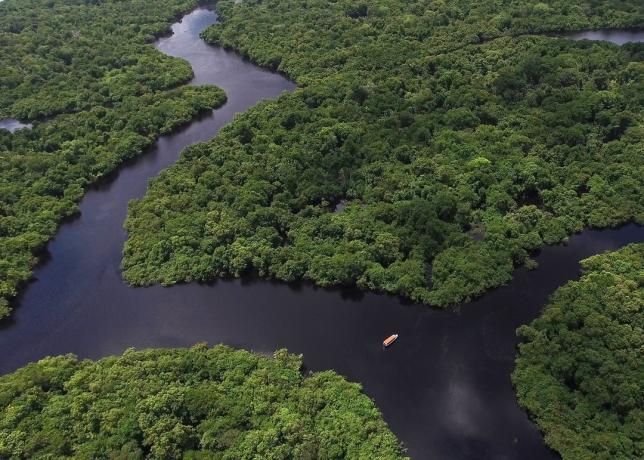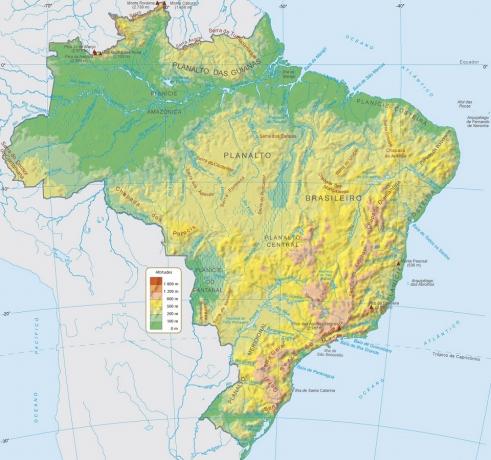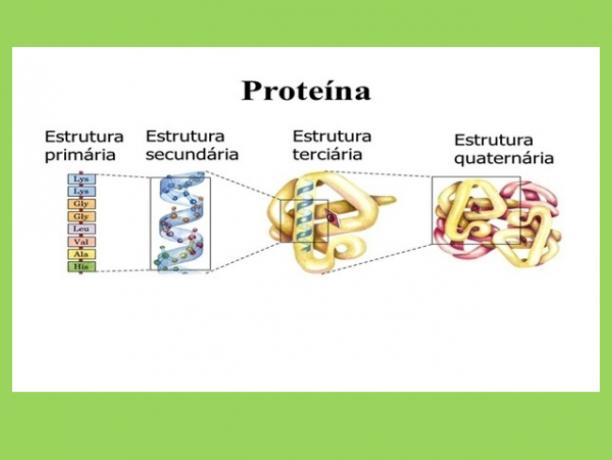Relief is the format of natural landscapes, that is, the physical aspects that make up a particular region. The relief forms are above the earth's surface and, according to their characteristics, determine the particularities of a relief.
There are four main types of relief: plateaus, plains, mountains and depressions.
plateaus
Plateaus - which can also be called plateaus - are regions with altitudes above 300 meters, which have an elevated surface. They have a level top (or peak) and are mainly caused by erosion processes caused by the action of winds and water, and the ends have lower altitudes.
Regarding the form of constitution, plateaus can be of three types: basaltic, sedimentary or crystalline. You basalts have volcanic rocks in their main constitution and the sedimentary are formed by sediment rocks. the plateaus crystalline are formed by crystalline rocks.
 Mount Roraima is a plateau.
Mount Roraima is a plateau.
In Brazil, this type of relief can be found mainly in the center of the country and in the southern and eastern regions. It is estimated that the area occupied by this type of relief in the country reaches 5 million square kilometers.
These are some of the plateaus found in the Brazilian relief:
- Central Plateau
- Guyana Plateau
- Mount Roraima
- Northeast Plateau
Find out more details about the plateaus and learn more about the process of erosion.
plains
The plains, as the name implies, are flat regions. They are almost always located in low altitude regions and reach a maximum of 100 meters above sea level.
Because they are closer to sea level, they are formed by sediments originating from the aquifer ecosystem, both from the seas, as well as from rivers and lakes.
Plains can be formed by different types of sediments and, depending on the formation, receive a different classification. If it is formed in the sea area, it receives the name of coastal plain. If located in a river region, it will be a river plain. There are still the lake plains, located near lakes.
 The Amazon Plain is an example of a plain relief form.
The Amazon Plain is an example of a plain relief form.
In Brazil, we can find this type of relief mainly in the North and Midwest regions.
Some of the Brazilian plains are:
- Amazon plain
- coastal plain
- Plain of the Araguaia River
Difference between plateaus and plains
Plateaus and plains are two relief forms that have one feature in common: they are both flat reliefs.
The difference between them is the altitude., since the plateaus have more altitude compared to the plains.
Plateaus are usually above 300 meters and plains usually reach a maximum of 100 meters.
mountains
Mountains are the type of relief that has the highest elevation compared to the others, that is, they have the highest altitudes.
They can be formed by different natural processes, such as by volcanic eruptions (volcano activity) or by movement of tectonic plates - that form the earth's crust.
The process of formation of mountainous areas takes place over long periods and results from the earth's movement, which, when subjected to a shock in its soil, is capable of raising the surface.
In Brazil, there are mountains in states like Rio de Janeiro, São Paulo, Minas Gerais and Santa Catarina. The regions that present this type of relief can also be known as mountainous regions, in allusion to the expression sierra (set of mountains).
 The Pico das Agulhas Negras is an example of mountain relief.
The Pico das Agulhas Negras is an example of mountain relief.
Some of the best known mountains in the Brazilian relief are:
- Peak of fog
- Flag Peak
- mine stone
- Agulhas Negras Peak
Also read about the tectonic plates.
depressions
Depressions are relief forms characterized by being at sea level or at lower altitudes compared to other types of relief close to them.
On average they are between 100 and 500 meters and are characterized by being flatter. If they are at sea level, they are called absolute depressions, the others are called relative depressions.
The Dead Sea is located in the Middle East and bathes the regions of Jordan, West Bank and Israel. It is considered the largest absolute depression in the world and is approximately 430 meters below sea level.
 The Dead Sea in Israel is an example of depression relief.
The Dead Sea in Israel is an example of depression relief.
The formation of a depression occurs mainly by the action of the movement of water and wind, which cause more irregular stretches in the relief. For this reason, depressions, despite being flat, tend to have surface irregularities.
Depressions can be of three types: marginal, peripheral or interplanal. The marginal ones are close to basins formed by sediments and the peripheral ones are located in crystalline or sedimentary terrains. Interplanal depressions are those that have lower altitudes in relation to the nearby plateaus.
In Brazil, relief is found more easily in the south and southeast regions, but it also occurs in other areas.
These are some of the depressions in the Brazilian relief:
- South Amazon Depression
- Araguaia Depression
- Depression in Tocantins
- North Amazon depression
Brazil relief
In Brazil, there are several types of relief, but the main ones are: plateaus, plains and depressions. In smaller quantities we can also find mountains.
See the location of the Brazilian relief on the map:
 Map of reliefs in Brazil (Source: Brazilian Institute of Geography and Statistics - IBGE).
Map of reliefs in Brazil (Source: Brazilian Institute of Geography and Statistics - IBGE).
What are the agents of relief?
A relief changes over time and the causes of these changes are called relief agents. They can be of two types: exogenous or endogenous.
You exogenous agents (or external agents) are natural elements that produce changes from external processes. They are characterized by causing alterations above the earth's surface.
Examples of exogenous agents are: the action of water and wind on soil erosion.
You endogenous agents (or internal agents) are the agents that cause transformations from the inside out. The agents capable of altering the reliefs are the movement of tectonic plates, earthquakes and the activity of volcanoes.
Also read the meaning of relief.
Underwater Relief Forms
Just as it happens on the planet's surface, at the bottom of the seas there are also different forms, which are called underwater relief.
There are three main underwater reliefs (or ocean reliefs): Continental Shelf, Continental Slope and Abyssal zones.
Continental shelf
It is the first type of submarine relief after the terrestrial relief, it is located between the Earth's surface and the deepest regions of the oceans.
It normally has a maximum depth of 500 meters, being the region where activities such as fishing, mineral extraction and oil are carried out.
As the continental shelf is shallower, it receives sunlight. Therefore, in this type of relief live some animals, plants and plant organisms, such as phytoplankton.
Continental Slope
The slope is a type of intermediate underwater relief, located between the continental shelves and the abyssal zones. It is characterized by having a very marked unevenness, formed by valleys and mountains totally submerged. Its depth can reach 3000 meters.
In this relief, sediments belonging to the continental shelf region can be found.
Abyssal
The abyssal relief is located in the deepest regions of the oceans and can be more than 10,000 meters deep. It is in this relief that there are formations such as marine trenches and basins.
As it is a region of great depth, unlike what happens on the continental shelf, it does not receive any sunlight. For this reason, there are few life forms existing in these underwater areas.


